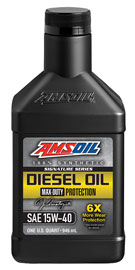Confused About Diesel Oil? We’ll help you Joel Youngman|Jan 31, 2020 8:03 AM Your diesel truck is a serious investment – don’t skimp on protection. AMSOIL manufactures the best diesel oils on the market, providing the ultimate protection for your hard-working diesel engine, preserving the horsepower you crave and keeping you on the road. We […]
You are browsing archives for
Tag: oil consumption
Low-viscosity doesn’t mean low quality
Low-viscosity doesn’t mean low quality As motor oil viscosity continues to decrease, base oil and additive quality become more important. Michael Meuli | VICE PRESIDENT, TECHNICAL DEVELOPMENT Despite uncertainty surrounding future CAFÉ standards, fuel economy remains the biggest driver of innovation in the auto industry. One strategy for increasing fuel economy involves reducing energy lost […]
Help! How Many Quarts of Oil Does My Car...
How Much Oil Does My Car Need? John Baker|Dec 03, 2018 9:10 AM The answer seems simple: probably about five quarts. But, if you drive a small car with a four cylinder engine, it’s likely closer to four quarts. However, the V-8 engine in your truck could require about seven quarts. My in-laws’ RAM diesel […]


